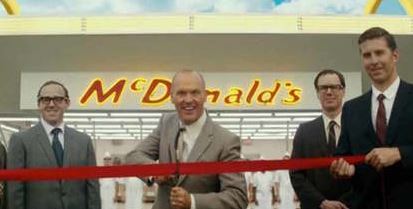There are two major ways of growing a successful restaurant concept. The first is the company-owned model. In this model, brands like Chipotle and Chick-fila own and operate their stores. The owner operated model typically leads to slower growth. On the other side is the franchise model. Most other large chains like McDonald’s, Taco Bell, and Dunkin’ Donuts have opted to use a franchise model for faster growth.
Check out what it costs to buy a restaurant franchise here.
How the Franchise Model Works
In the restaurant franchise model, there are two parties: the franchisee and franchisor. To join the system, the franchisee pays an upfront franchise fee (usually $20k-$50k) as well as build costs and ongoing royalties back to the franchisor. The franchisor collects royalties, franchise fees and advertising fees and sometimes rent from the franchisees.
In the franchise model, the Franchisor and franchisee enter into a franchise agreement. This agreement allows the franchisee to use the brand and sell certain products over a specified term (usually 10-20 years). In exchange, the franchisee is responsible for building and operating the restaurant. This includes things like staffing, ordering, and running the profitability of the restaurant.
Is it better to be a Franchisee or Franchisor?
There are benefits and downsides to being either a franchisee or franchisor. The relationship, in order to work well for a long time, must be mutually beneficial to both parties.
Franchising allows the franchisor to see greater growth because they are using someone else’s investment dollars to build stores. The income that they get is from franchisee fees and once this scales, there aren’t a lot of ongoing costs associated with these revenues. The downside for the franchisor is that they lose control of the product.
From the franchisee perspective, they are getting a turnkey (hopefully) model to invest and make an attractive return. Because the process and product are already figured out, this allows them to quickly grow units as opposed to trying to figure out what products and services to offer. The downside is that a large percentage of their sales are paid to the franchisor which drives down profitability.
Is it More Profitable to be a Franchisee or Franchisor?
From a percentage perspective, it is more profitable to be a franchisor than franchisee. Typically, a mature franchisor will see profit margins in the 40-50% range. By contrast, a really good margin for a franchisee will rarely exceed 10-15% for a restaurant franchise.
Franchisors collect three main fees: upfront franchise fees, royalties and advertising fees. Typically, the advertising fees are spent on advertising, so the greatest earnings driver is royalties. A franchisor must spend these on a team to manage franchisee relationships, but once a franchise is mature (100+ units), there is a lot of these royalties that fall to the bottom line (40%+)
Franchisees make their profits from operating successful stores. With that comes a lot of costs to manage. The major costs for a franchisee include labor, food costs and rent. Labor and food costs tend to be in the ballpark of 30% of sales. Rent tends to run around 5-10% of sales, depending on concept. Other costs are considerable as well, leaving only 10-15% profit margins at the end of the day (or lower)

